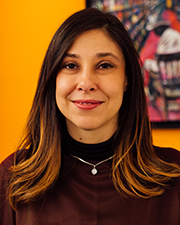
2021 Women in Building Services: Slavica Nikolic, Ronnette Riley Architect
Name: Slavica Nikolic, AIA LEED AP BD+C
Title: Associate, Senior Project Architect
Company Name: Ronnette Riley Architect
Real estate associations or organizations that you are currently a member of: AIA
What led you to your current profession?
I entered the field of architecture at the age of 19 (college) and I never left it. I was curious about many different aspects of the profession: Theory, social activism, urban design and planning, and later in pure architectural design. I immersed myself in different experiences: Research work, teaching and professional practice. I worked in New York City, Belgrade and in Moscow. I had my own architectural design studio, worked in hospitality, retail and residential sectors, adaptive reuse, interiors, feasibility studies and master plans, code compliance, etc.
I am grateful for this broad exposure and am still quite curious and animated to experience a variety of projects and new and different approaches to solutions.
In the past year, what project, transaction, or accomplishment are you most proud of?
The past year was a very strange year that is less about professional accomplishments and more about personal resilience and adaptability to different aspects of the pandemic. If anything, it became even more evident to me how well-being is an essential part of any design endeavor. If I look beyond this pandemic context, I am very proud that in the recent years I expanded my expertise to accessibility design from various points of view, as a designer and an expert witness, which inspired me to think about accessibility in a broad and holistic manner.
Who was/is your mentor and how did s/he influence/help you in your career?
I have always had great female mentors in architecture, and this continues to be an inspiration for my practice. I was the first graduate of talented Dr. Ruzica Bozovic Stamenovic from Belgrade University. I had the great luck to connect with a NYC architect and visiting professor Frances Halsband, FAIA, during my postgraduate studies at Ball State University, who introduced me to Ronnette Riley, FAIA, in whose office I learned my first professional steps, and which gave me confidence to start working on my own for many years to follow. Interestingly, or logically, I returned to RRA a few years ago to join its leadership committee, which is 75% female based. Ronnette, with her vast knowledge and experience, continues to be a valuable mentor.
What trends will dominate your industry in the coming months?
I believe the post- pandemic world is focusing on wellbeing and resiliency, so flexibility and adaptability are prominent goals of design. The awareness of how we interact with a space, how it can affect our health, mood, and life in general, and how it can adapt to continue to be beneficial in different scenarios, that awareness is growing. Starting with flexible, hygiene improved, accessible interiors and sustainable energy practices, architects will continue to be at the forefront of creating more humane environments for the new post pandemic world we inhabit.
How do you contribute to your community or profession?
I value professionalism and practice responsibly no matter the job size or type, always giving my best. That is how I see my major contribution. I also try to incorporate old and new wellbeing practices that are beneficial in architectural and interior design. I am a licensed Feng Shui consultant and I have been organizing Feng Shui workshops and presentations, involving people to become more aware of how we can benefit from our living environments and styles.
What books or social media influencers would you recommend to other women?
There are many ideas around to help women uncover their potential that may have been hidden in a patriarchal culture. Women should empower each other while welcoming a new vision of leadership. This includes embracing our nurturing and relational nature, focusing on inclusivity and enriching our shared future.
What did you want to be when you grew up?
In my early childhood I wanted to be an accordion player. I ended up studying it for eight years and playing in my youth in different orchestras and bands. In my early diary notes, at approximately age of 10, I expressed that I did not want to have a regular job, but rather an artistic and bohemian life. First notes on architecture dated from 12 years old. I wrote, I wanted to be an architect in New York, center of the world. I guess that was one of the phantasies I forgot and during my high school years I pursued science, music and writing, but at the end of the high school I decided I will pursue architecture, and never regretted that decision.